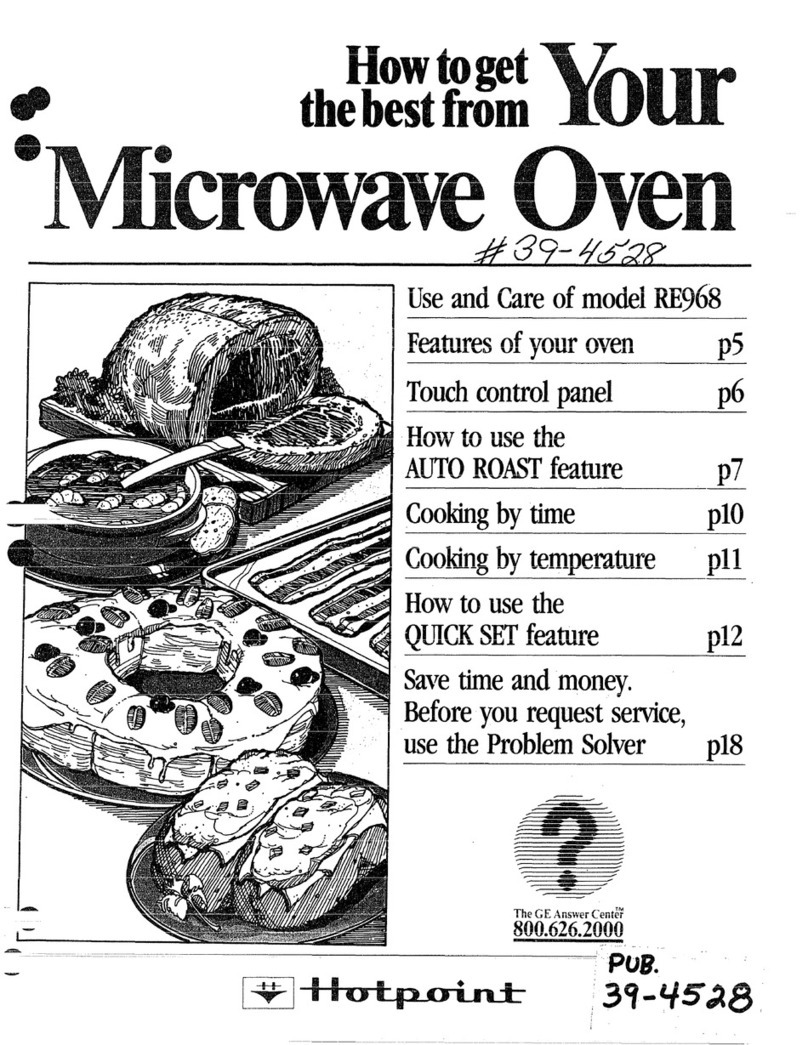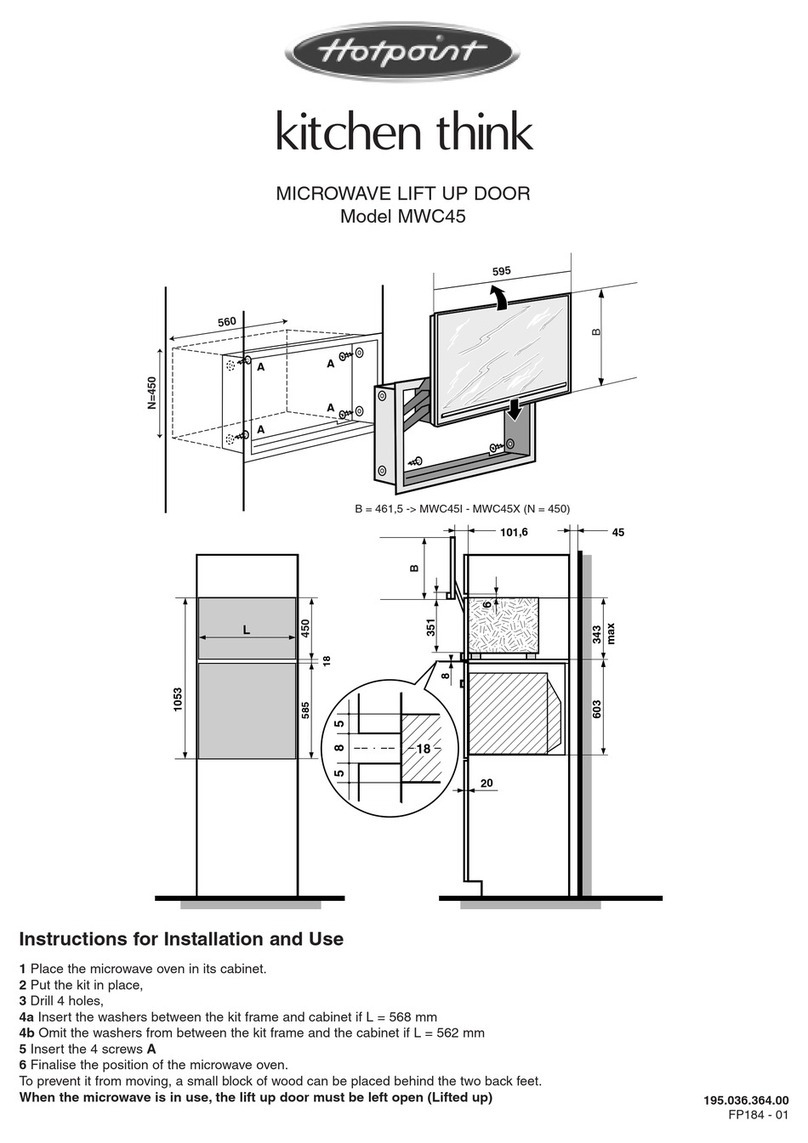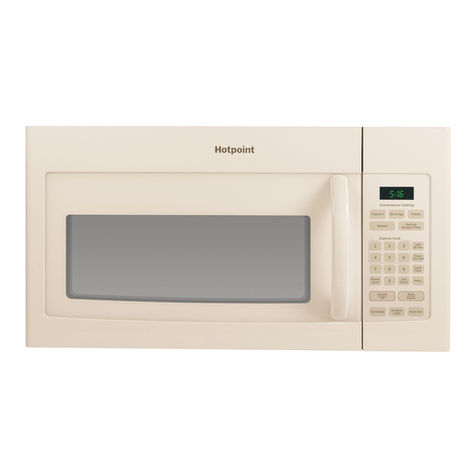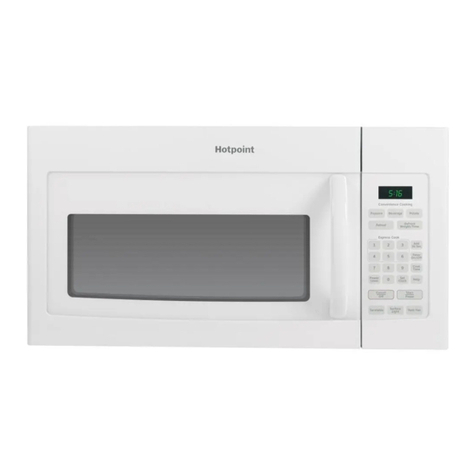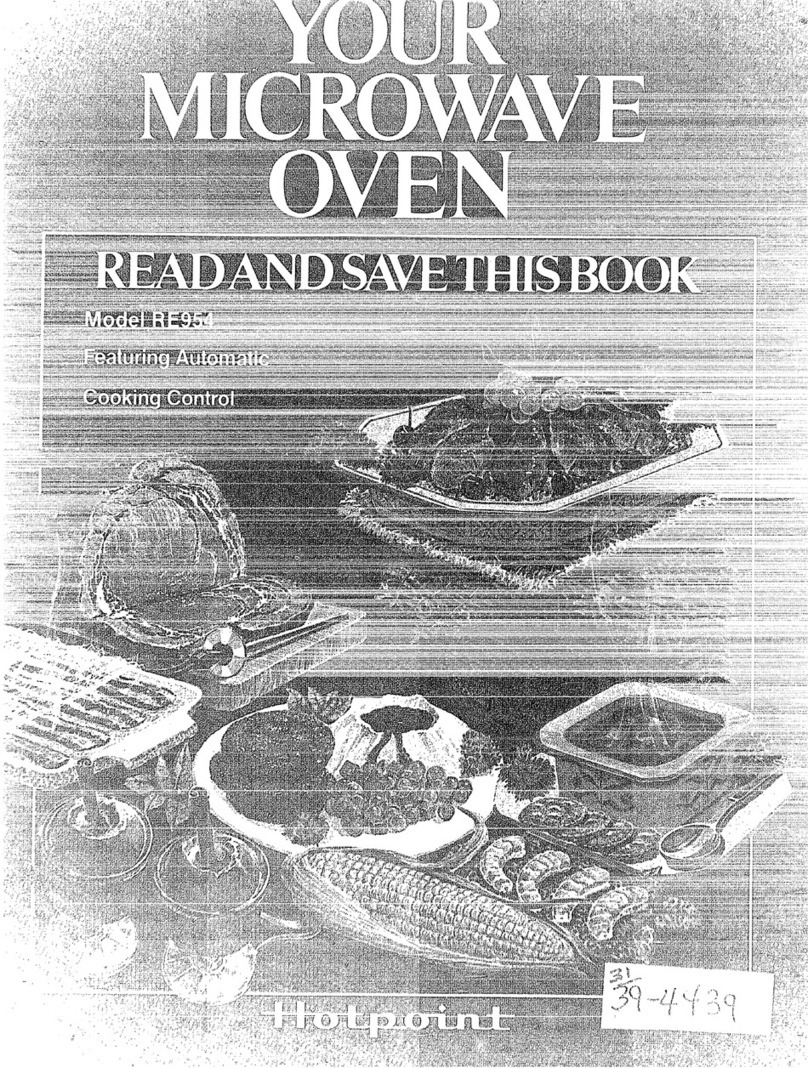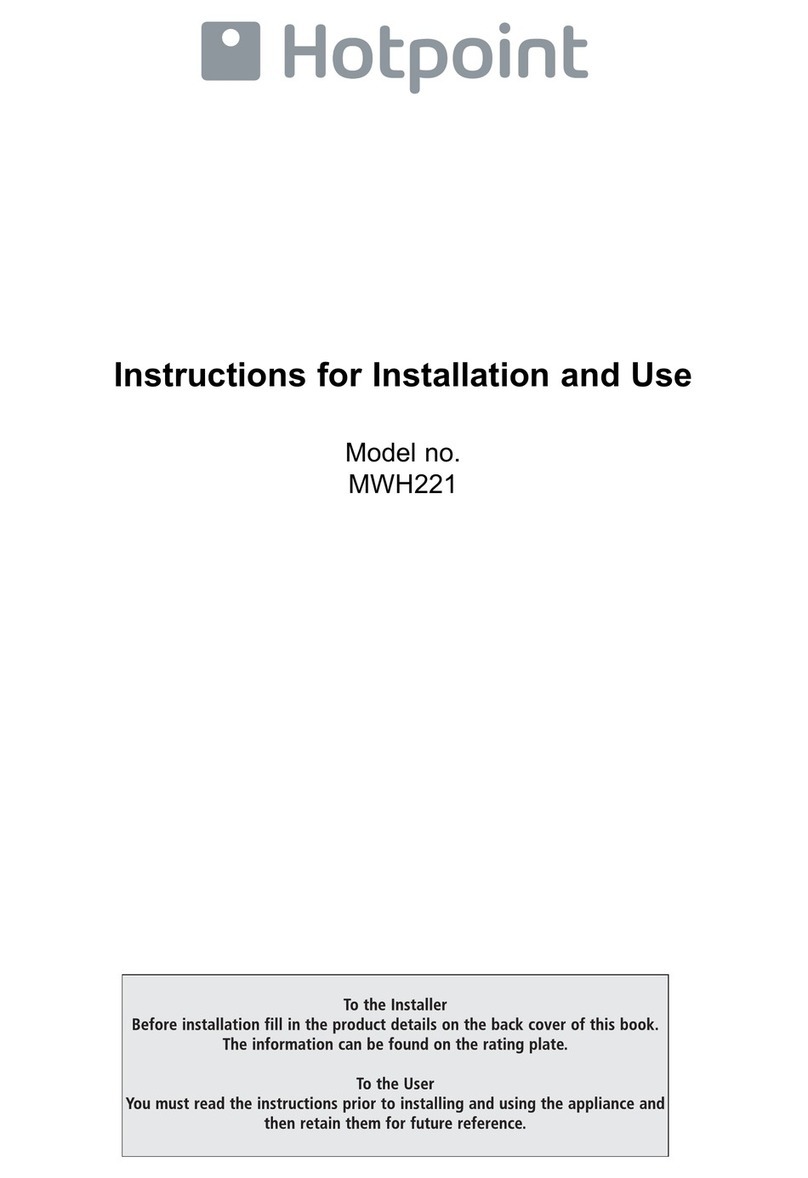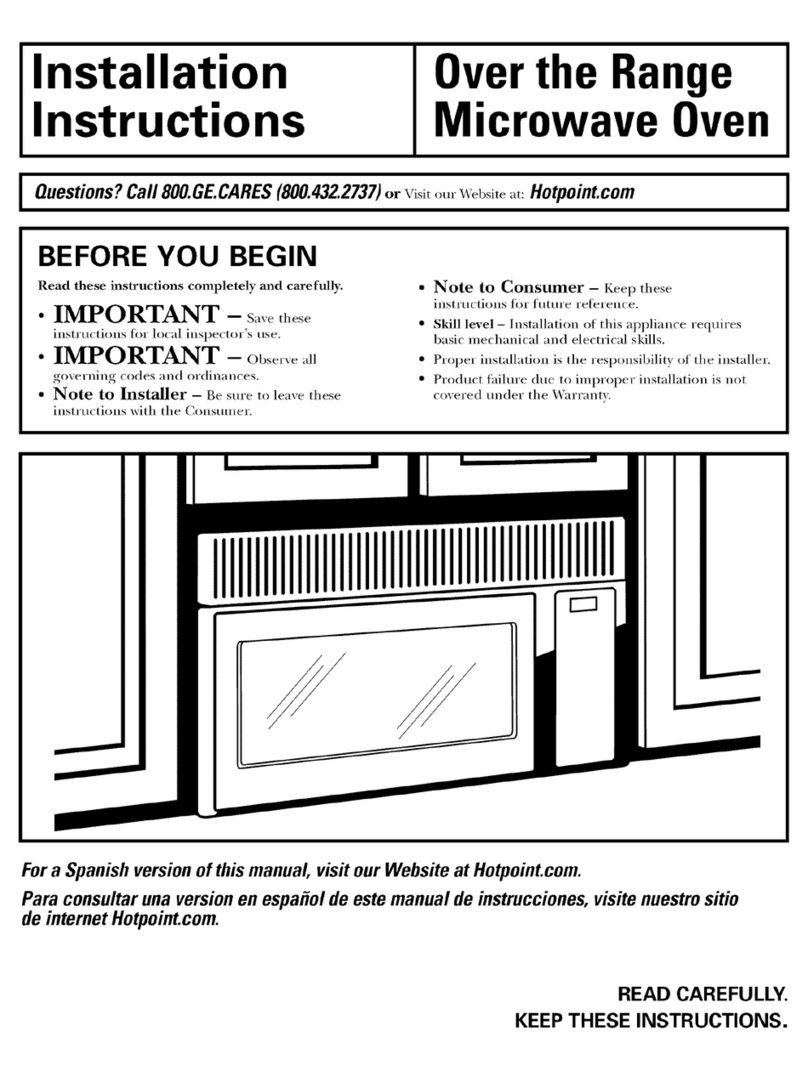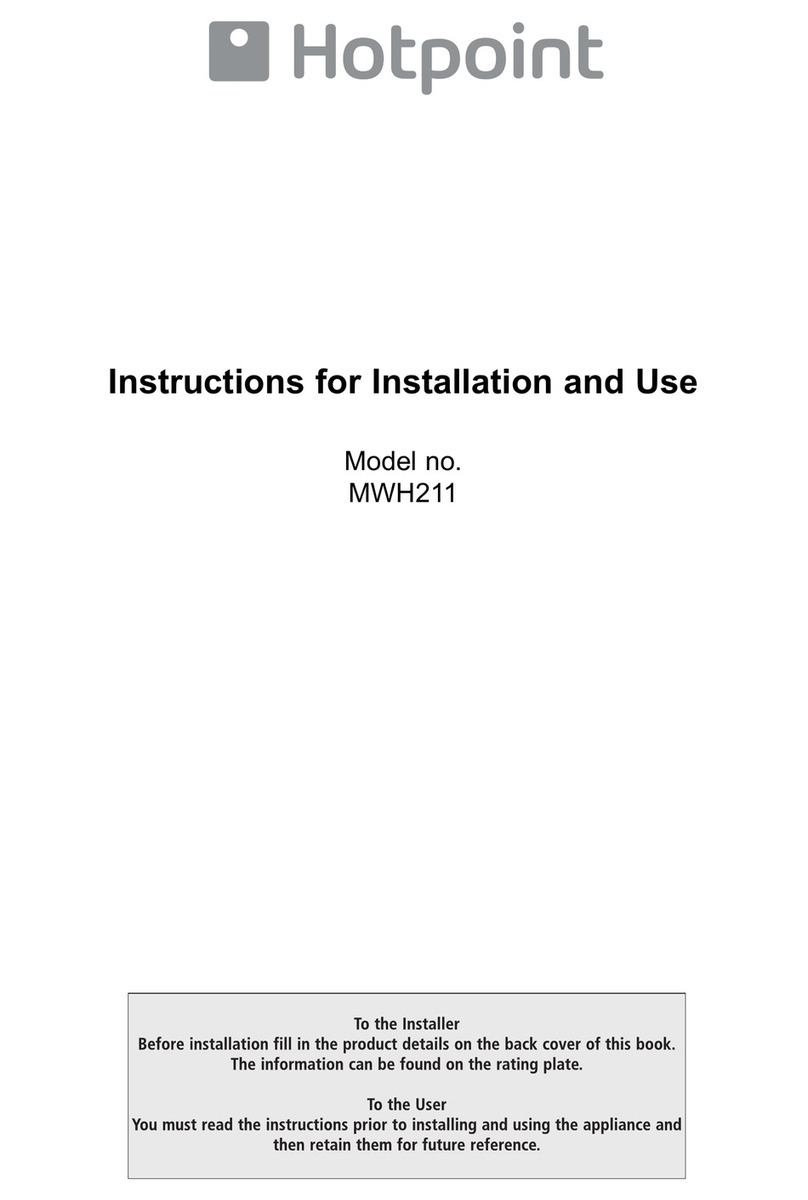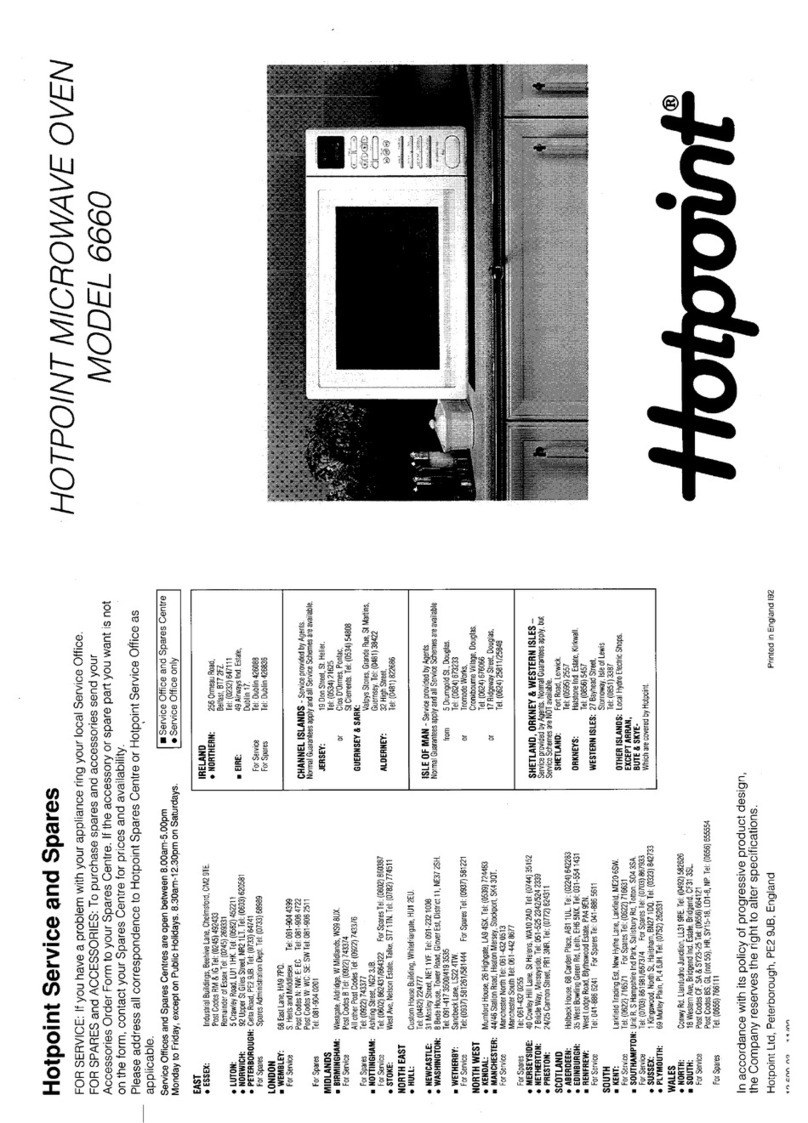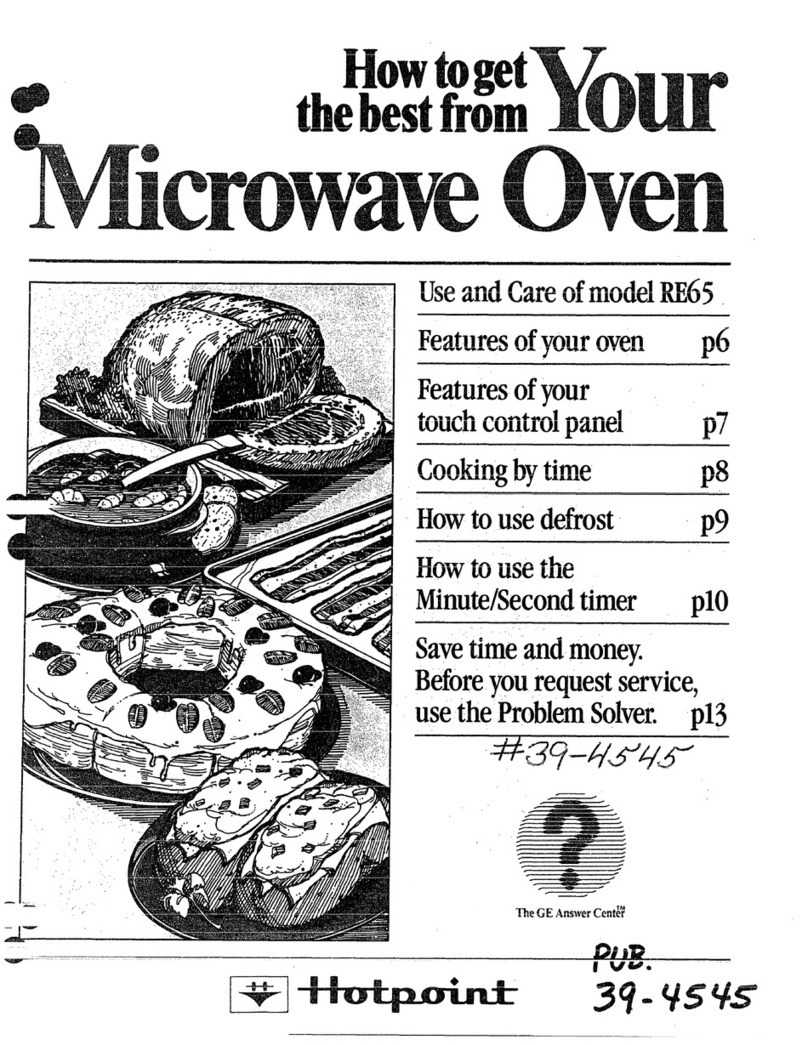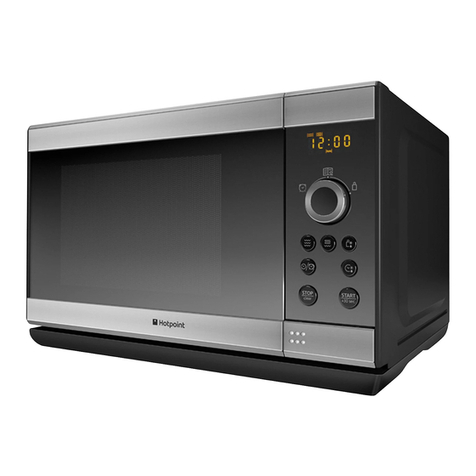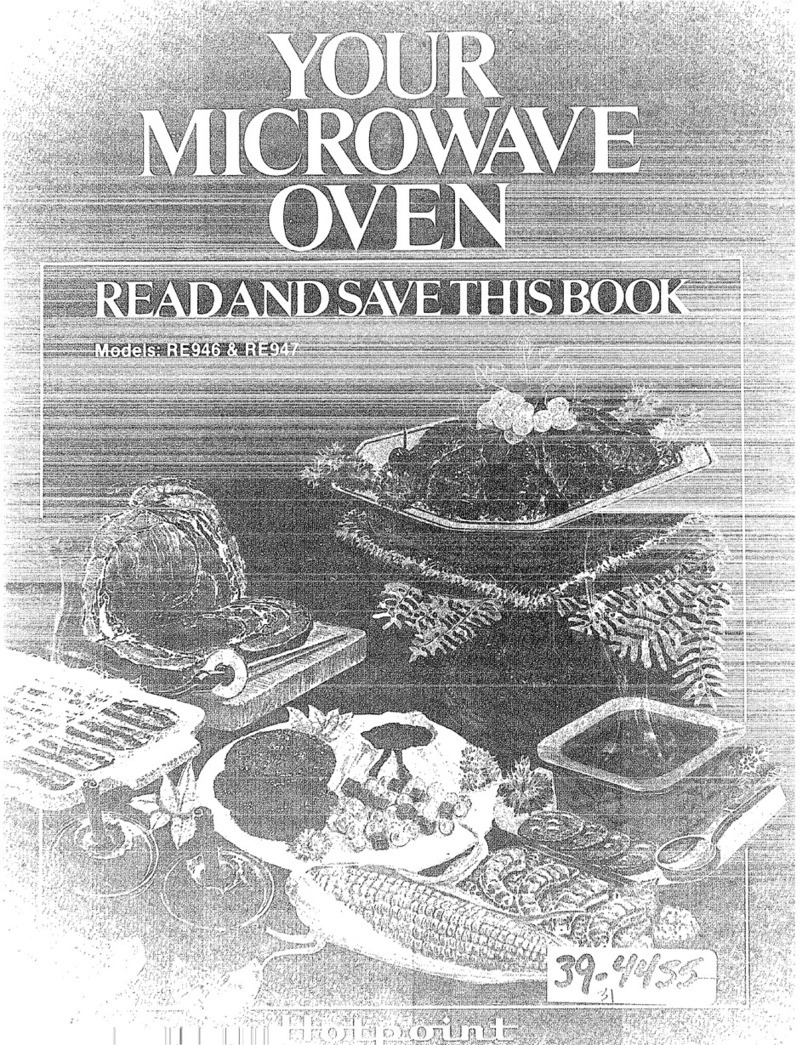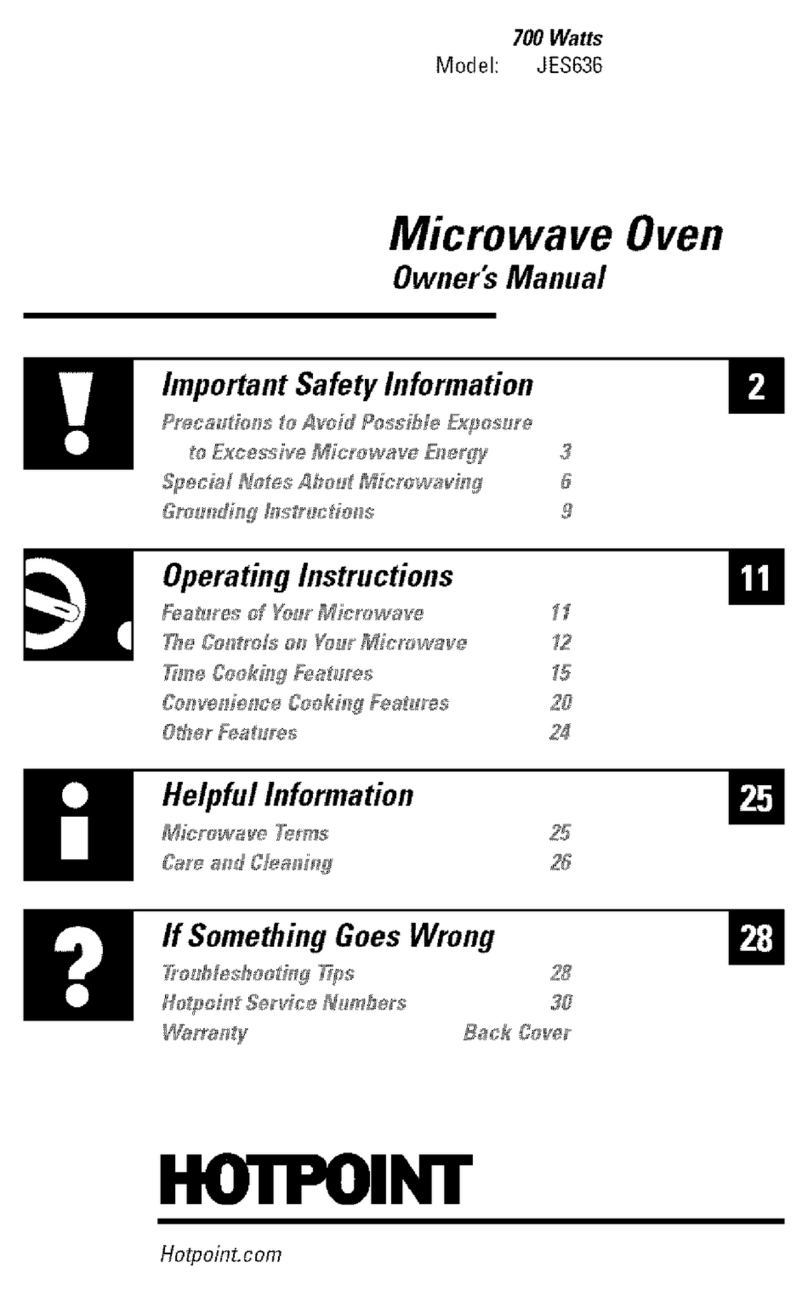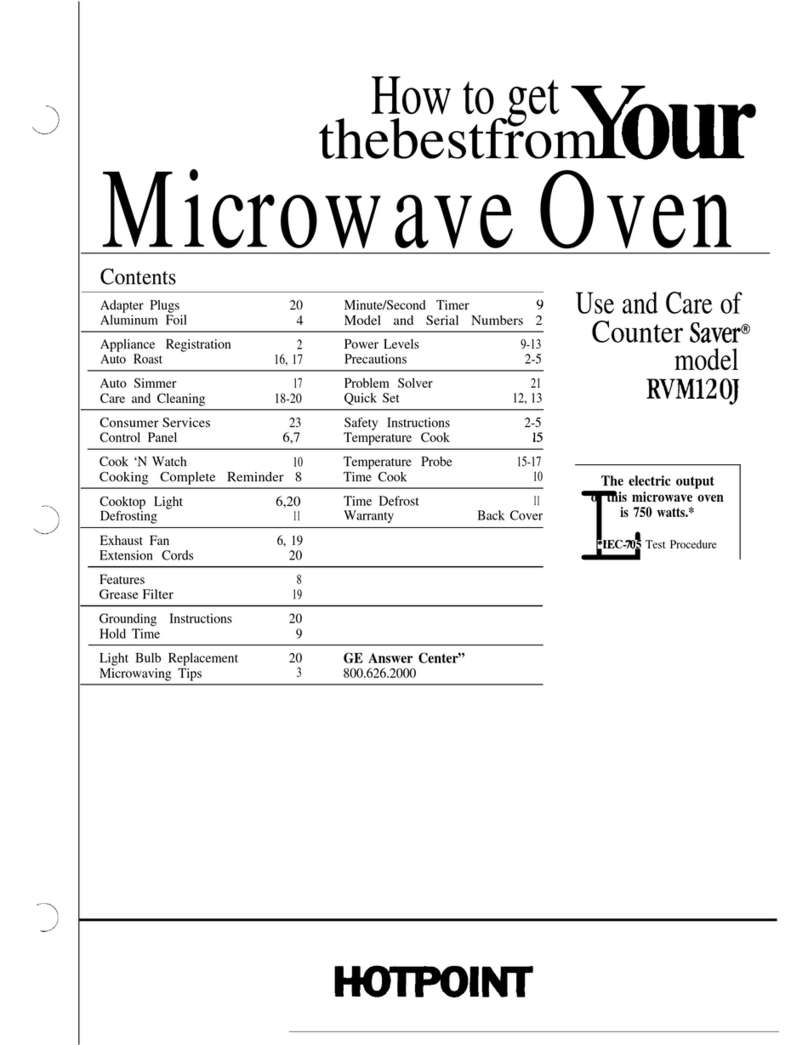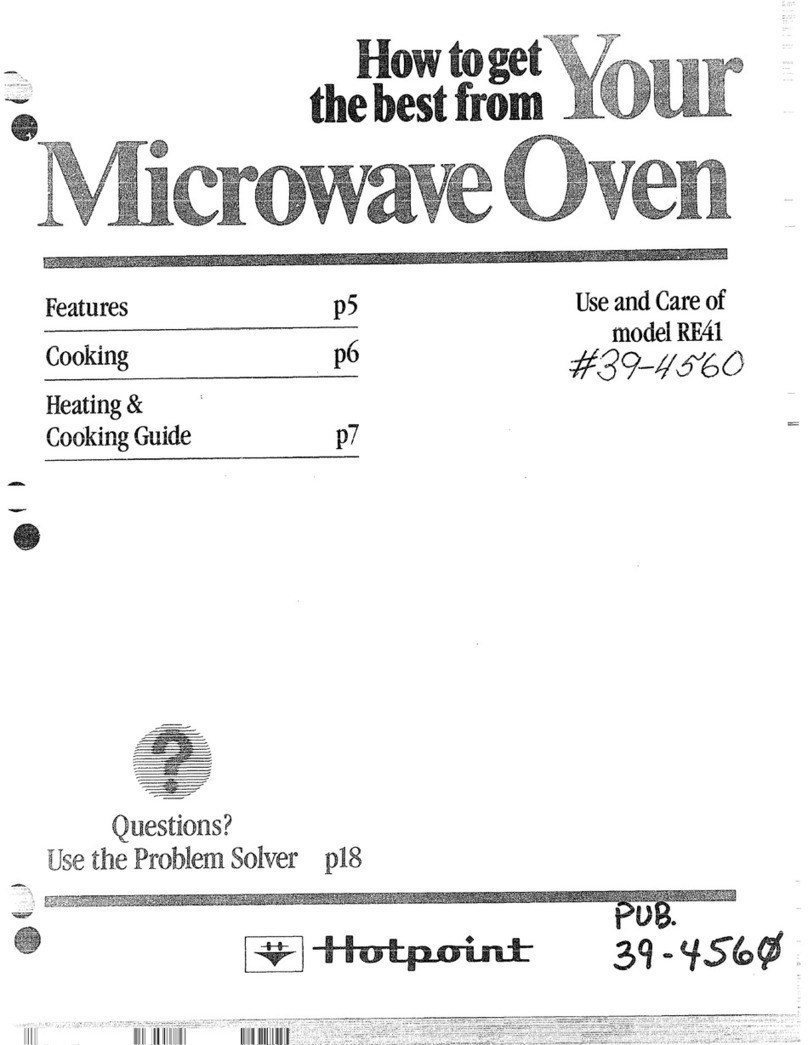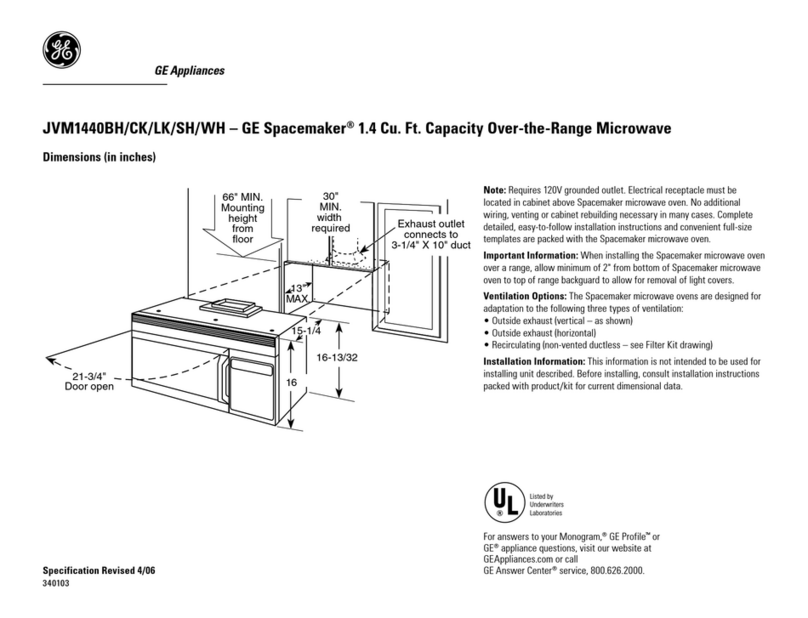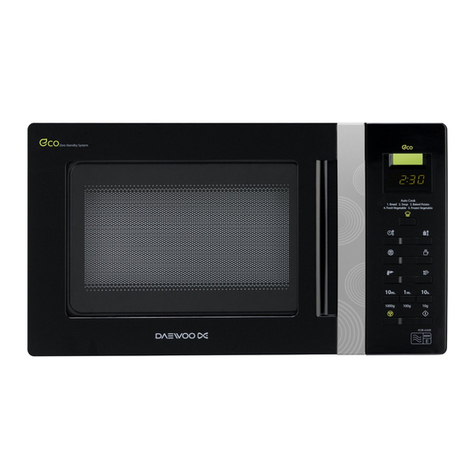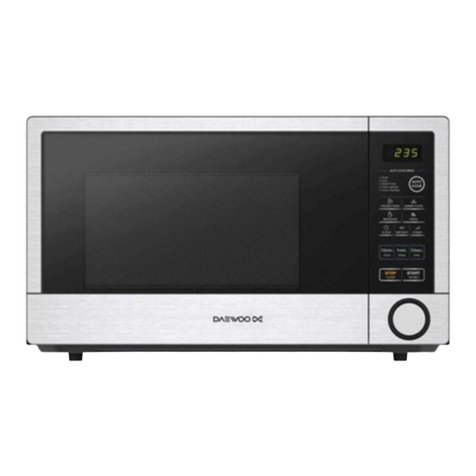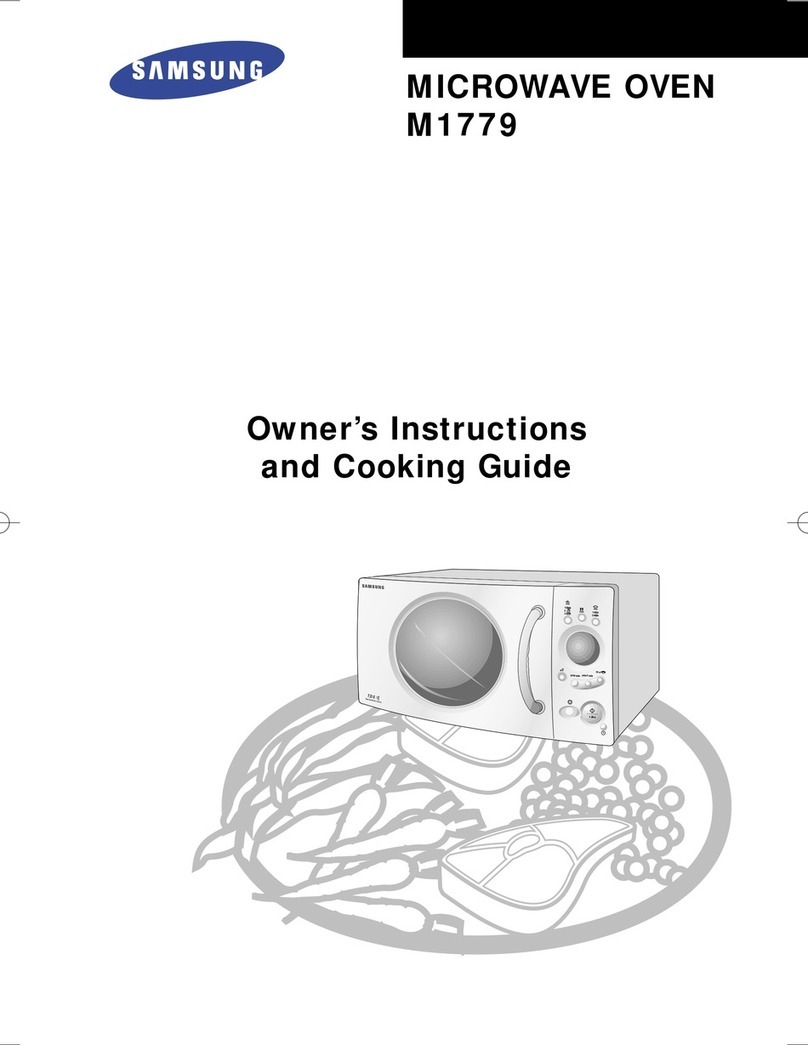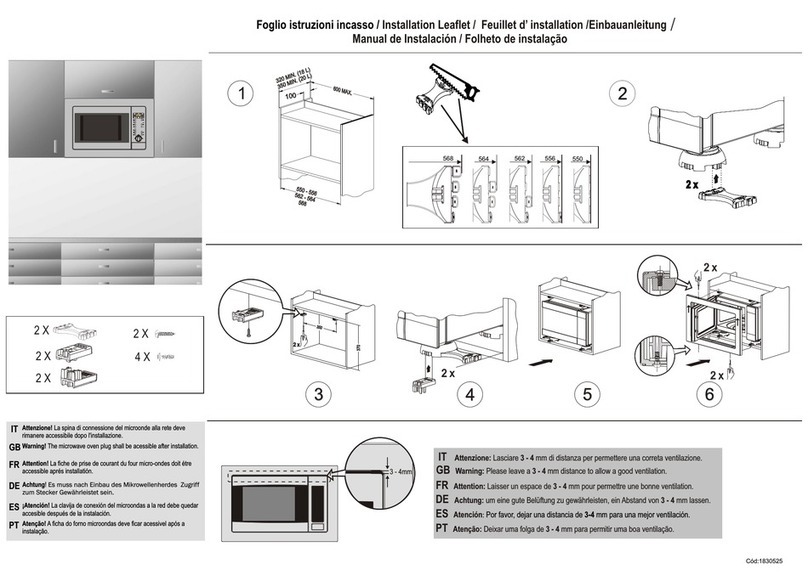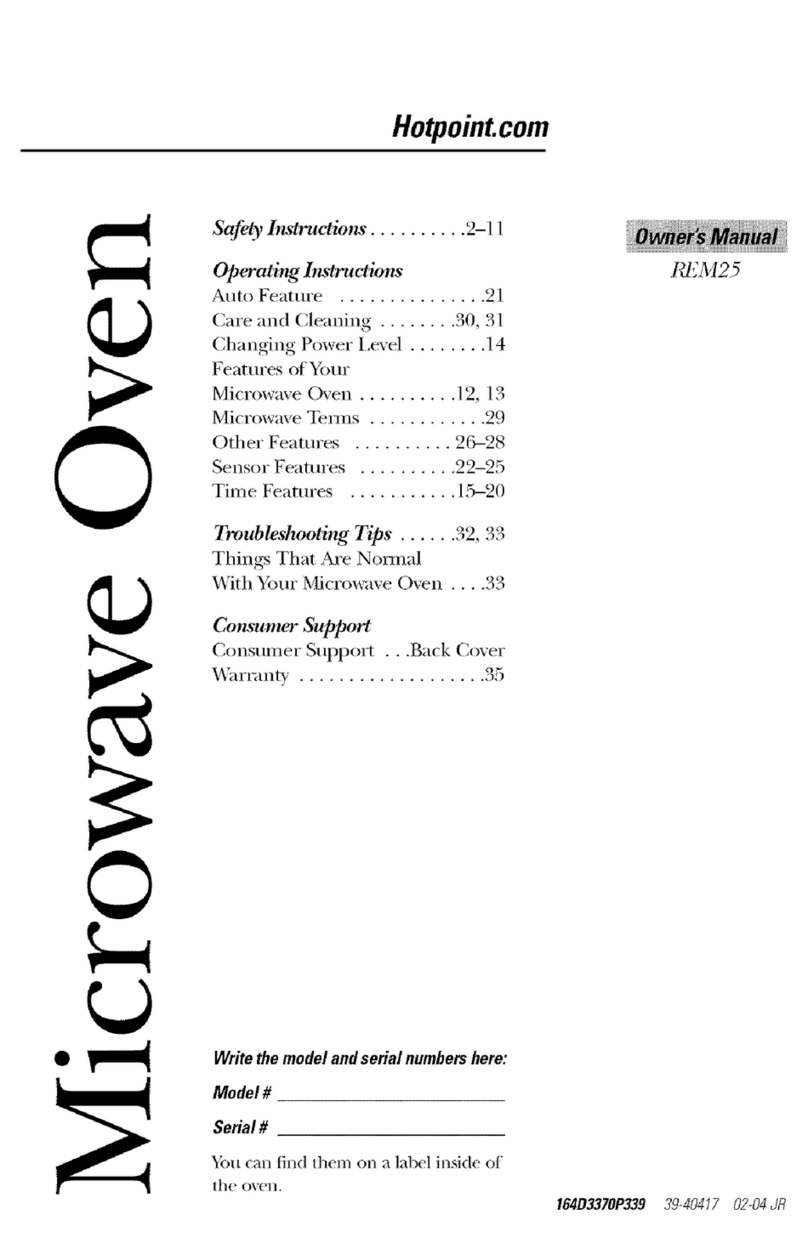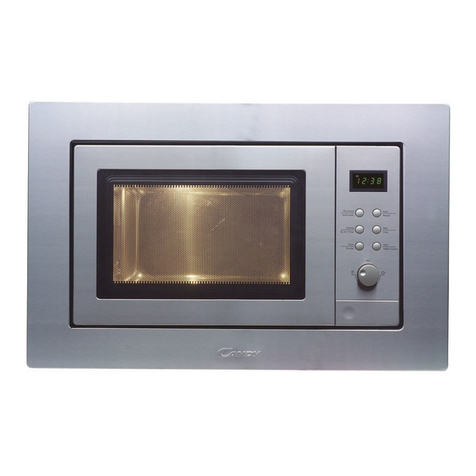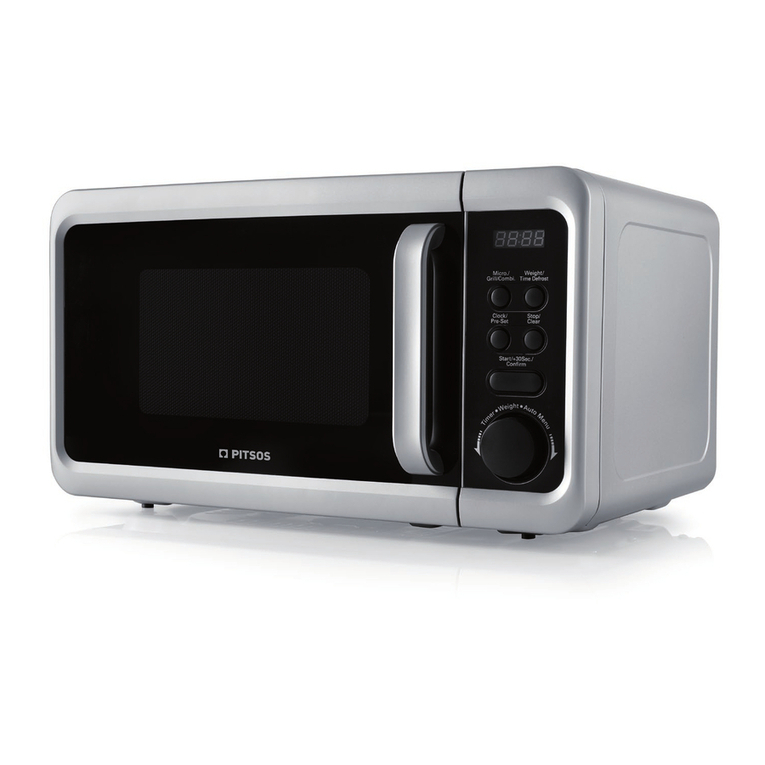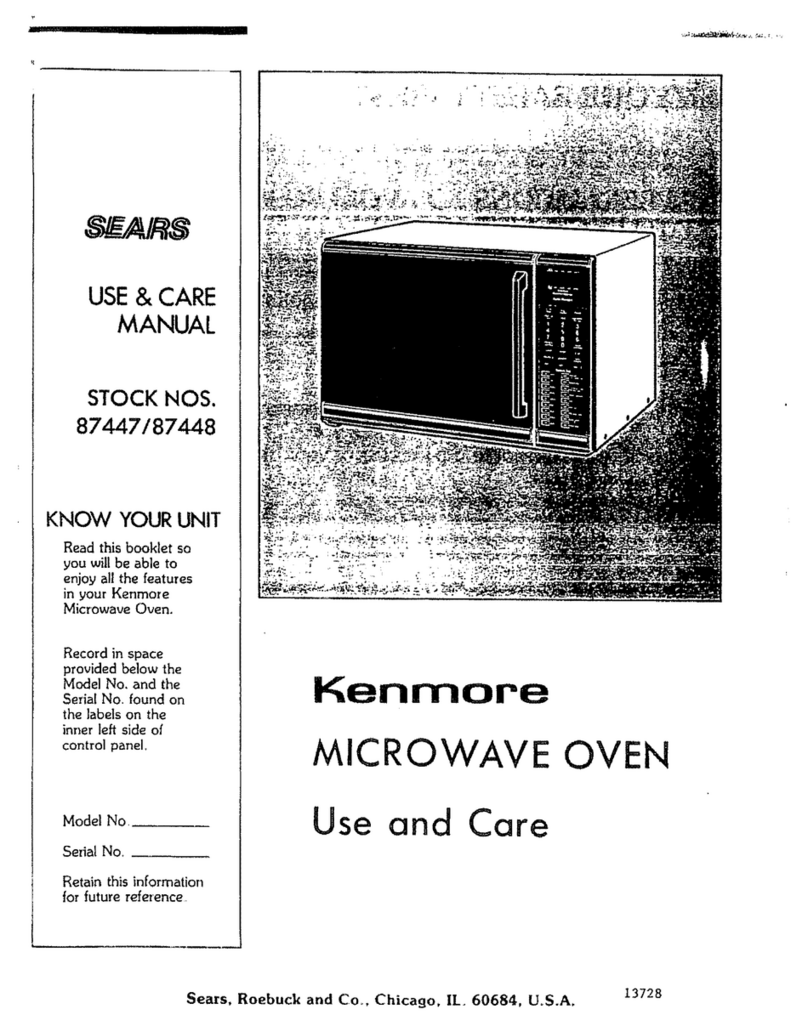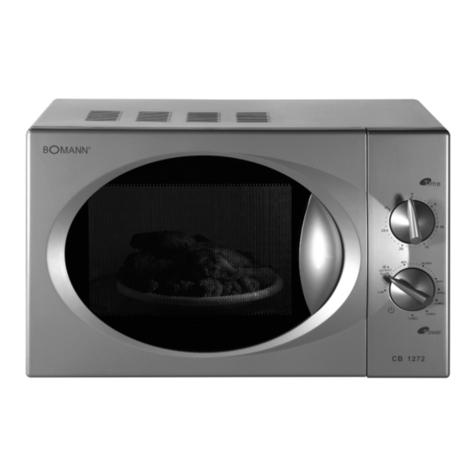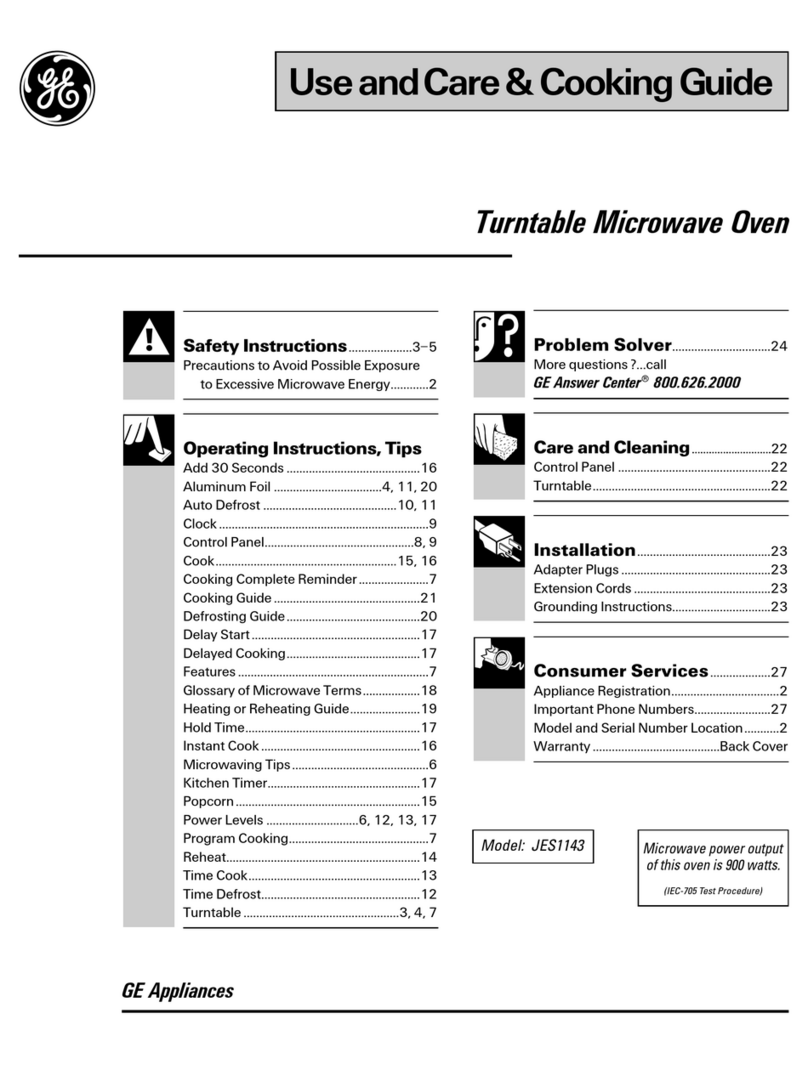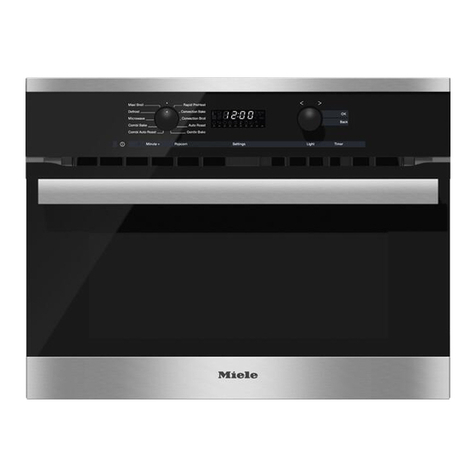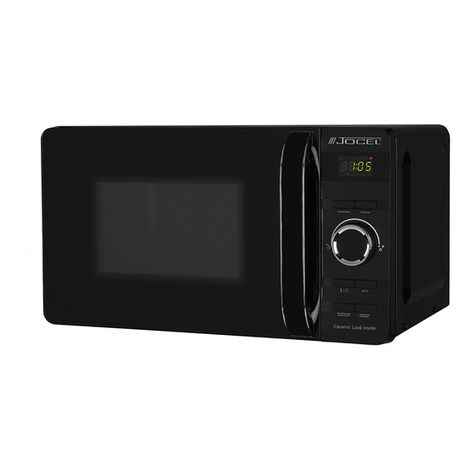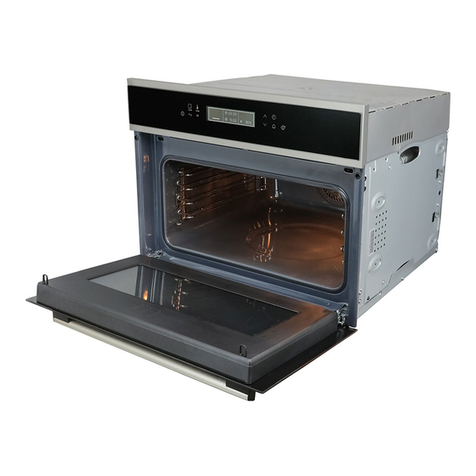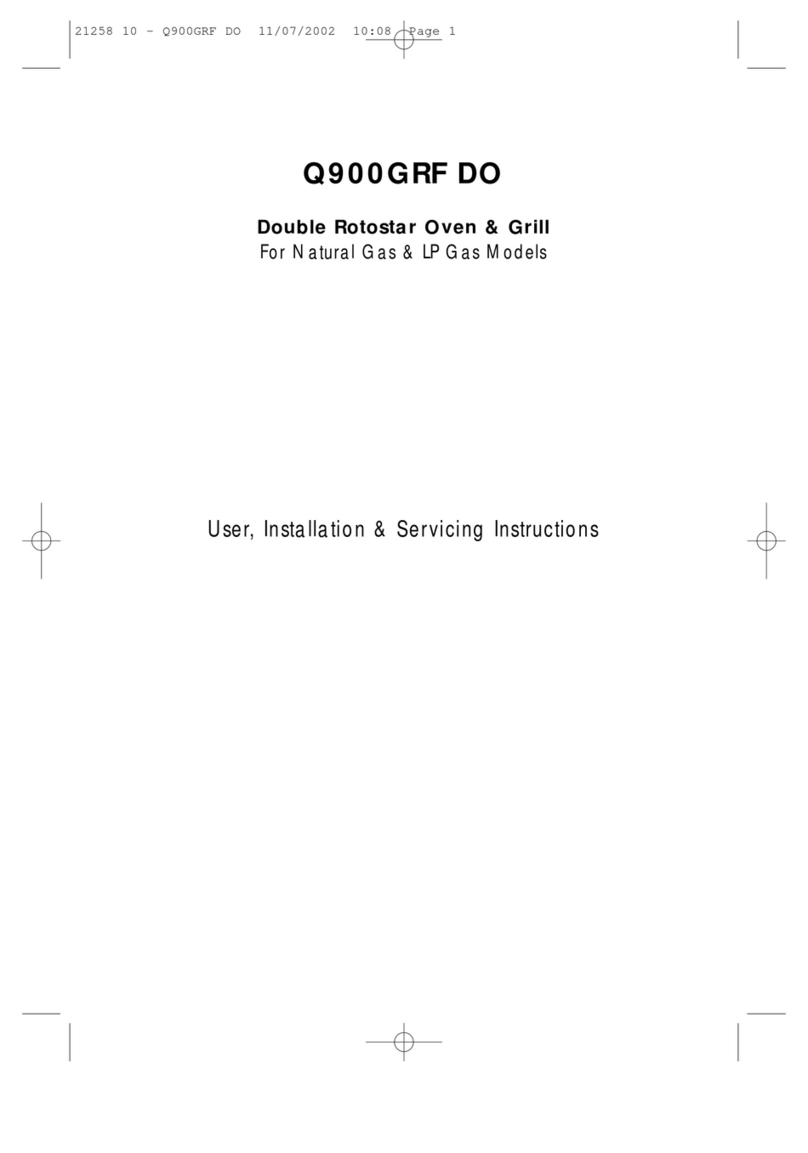IMPORTANT SAFETY INSTRUCTIONS
(continued)
–Do not pop popcorn in your
microwave oven
udess
in a special
microwave popcorn accessory or
udess
you use popcorn labeled for
use in microwave ovens.
–Do not overcook potatoes.
They could dehydrate and catch
fire,
causing damage to your oven.
–If materials inside oven should
ignite, keep oven door closed,
turn oven off, and disconnect
power cord, or shut off power at
fuse or circuit breaker panel.
s
Some products such as whole
eggs and sealed containers-for
example, closed glass jars—may
explode and should not be heated
in this oven.
●
Avoid heating baby food in
glass jars, even without their lids;
especially meat and egg mixtures.
●
Don’t
defrost frozen beverages
in narrow naked bottles (especially
carbonated beverages). Even if the
container is opened, pressure can
bufld
up. This can cause the container
to burst, resulting in injury.
s
Use
mehl
only as directed in
this book.
TV dinners maybe microwaved
in foil trays less than 3/4” high;
remove top foil cover and return
tray to box. When using metal in
the microwave oven, keep metil
(except for the Double
Duty
TM
shelfl
at least 1 inch away from
sides of oven.
●
Cooking utensils may become
hot because of heat transferred
from the heated food. Pot holders
may be needed to handle the
utensd.
●
Sometimes, the cooking tray
can become too hot to touch. Be
careful handling the cooking tray
during and after cooking.
●
Foods cooked in liquids (such
as pasta) may tend to boil over
more rapidly than foods containing
less moisture. Should this occur,
refer to page 29 for instructions on
how to clean the inside of the oven.
—
Q
Do not use a thermometer in
food you are microwaving unless
the thermometer is designed or
recommended for use in the
microwave oven.
c
Remove the temperature probe
from the oven when not using it
to cook with. If you leave the
probe inside the oven without
inserting it in food or liquid, and
turn on microwave energy, it can
create electrical arcing in the
oven and damage oven walls.
●
Plastic
utensih-Plastic
utensils
designed for microwave cooking
are very useful, but should be
used carefully. Even microwave
plastic may not be as tolerant of
overcookingconditionsasareglass
or ceramic materials and may
soften or char if subjected to short
periods of overcooking. In longer
exposures to overcooking, the
fd
and utensils could ignite. For
these reasons: 1) Use microwave
plastics
ordy
and use them in strict
compliance with the utensil
manufacturer’s recommendations.
2) Do not subject empty utensils to
microwaving. 3) Do not permit
children to use plastic utensils
without complete supervision.
c
When cooking pork follow
the directions exactly and always
cook the meat to an internal
temperature of at least
170°F.
This assures that, in the remote
possibility that trichina may be
present in the meat, it will be
killed and meat will be safe to eat.
●
Boiling eggs is not
recommended in a microwave
oven. Pressure can build up
inside the
egg
yolk and may cause
it to burst, resulting in injury.
●
Foods with unbroken outer
“skin”
such as potatoes, sausages,
tomatoes, apples, chicken livers
and other giblets, and egg yolks
(see previous caution) should be
pierced to allow steam to escape
during cooking.
4
.
~~Boilable”
cooking
pouches
and tightly closed plastic bags
should be slit, pierced or vented
as directed in the convenience
food guide (pages 14 and 15) and
the cooking guide (pages 16-25).
If they are not, plastic could burst
during or immediately after
cooking, possibly resulting in
injury. Also, plastic storage
conbiners
should be at least
partially uncovered because they
form a tight seal. When cooking
with containers tightly covered
with plastic wrap, remove
covering carefully and direct
steam away from hands and face.
●
Sponhneous
boiling—Under
ce~in
special circumstances,
liquids may start to boil during or
shortly after removal from the
microwave oven. To prevent burns
from splashing liquid, stir the
liquid briefly before removing the
container from the microwave oven.
c
Use of the DOUBLE DUTY
TM
shelf accessory.
—Remove the shelf from oven
when not in use.
–Do not store or cook with shelf
on floor of oven. Product damage
may result.
–Use pot holders when handling
the shelf and utensils. They may
be hot.
–Do not use microwave browning
dish on shelf. The shelf could
overheat.
–Be sure that the shelf is
positioned properly inside the
oven to prevent product damage
(see page 26).
SAVE THESE
INSTRUCTIONS
